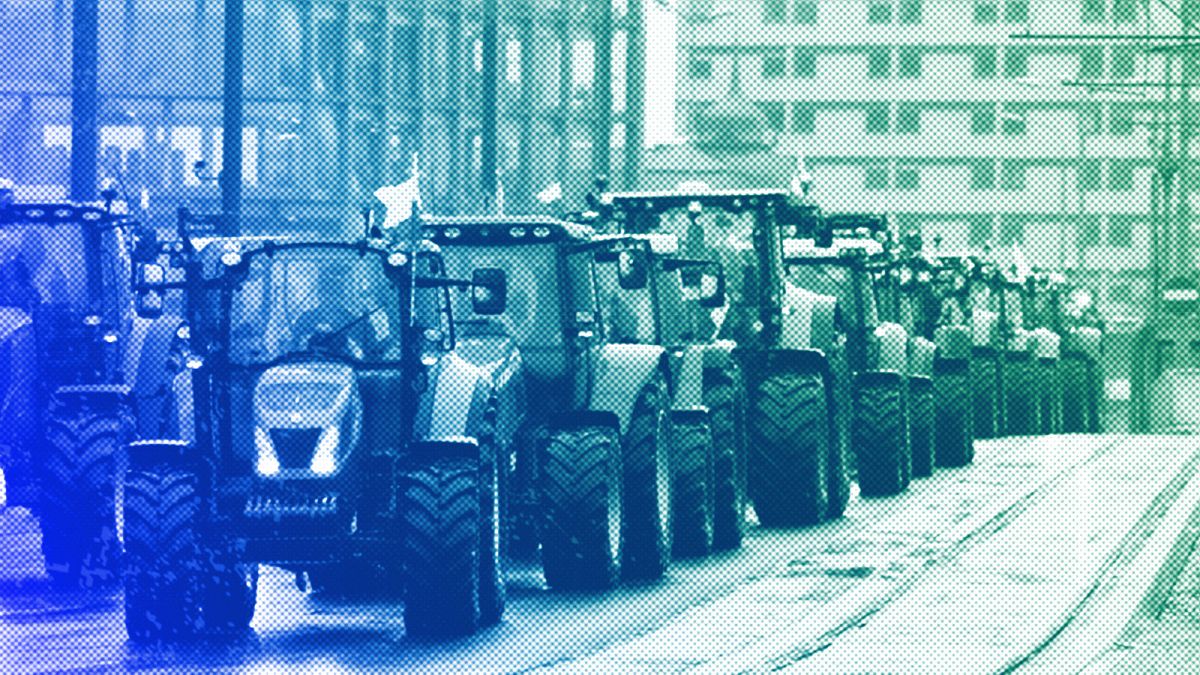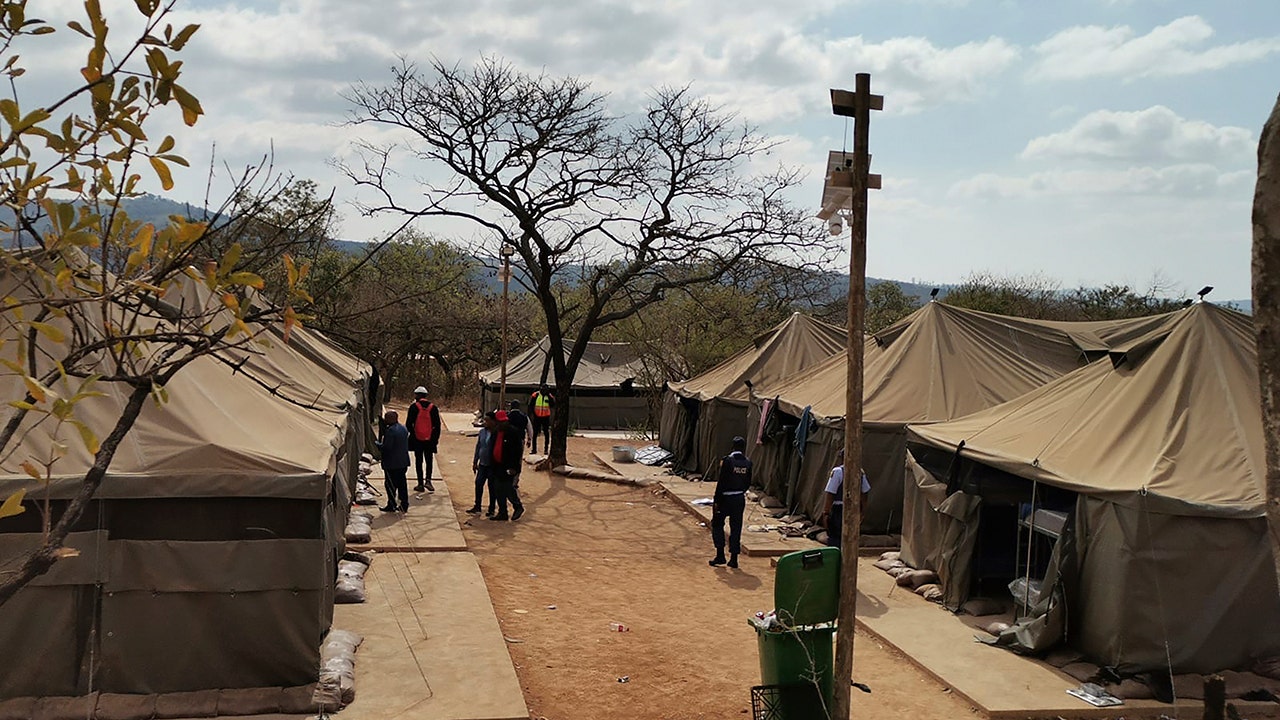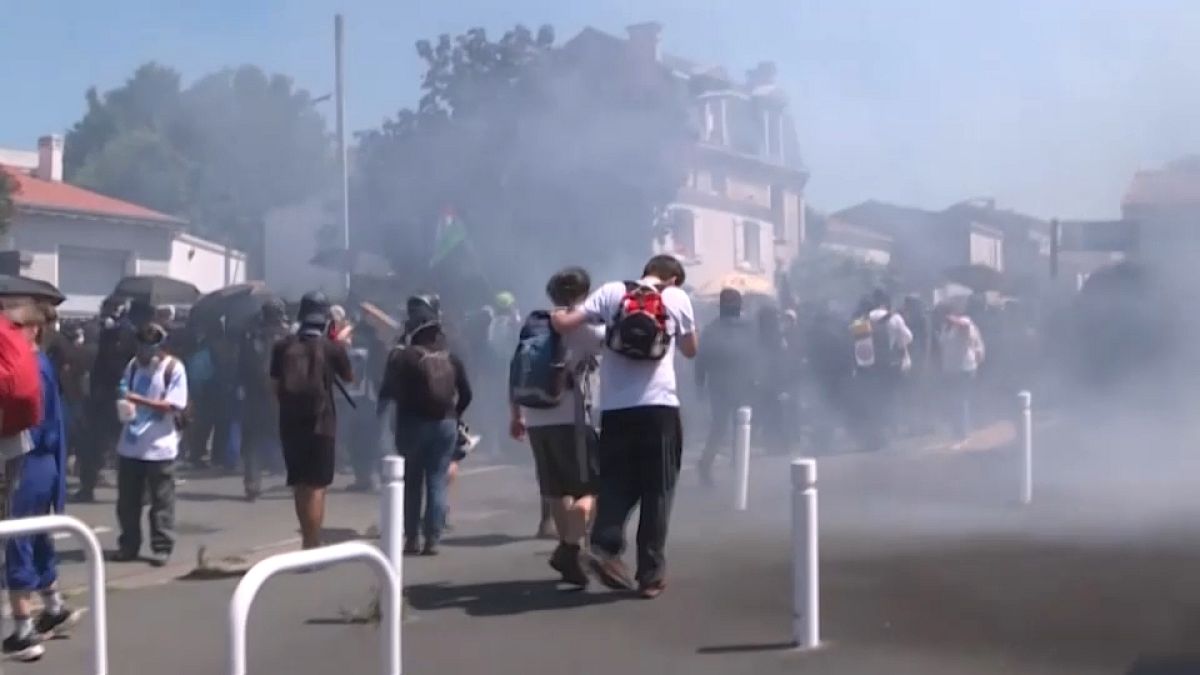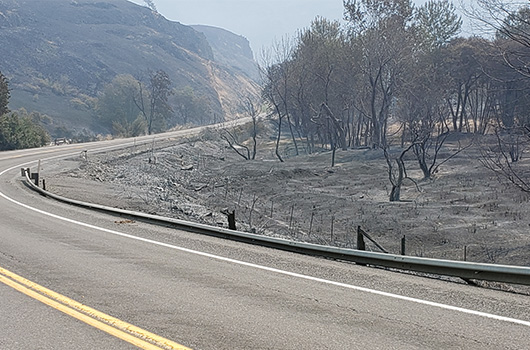World
The farmers' protests should be taken seriously by Europe's leadership

The opinions expressed in this article are those of the author and do not represent in any way the editorial position of Euronews.
The ability of enraged minorities to act should not be underestimated, as this poses significant political and electoral risks — the past few weeks have proven it, Radu Magdin writes.
It doesn’t require a sophisticated political observer or analyst to recognise that an unprecedented number of Europe’s farmers have taken to the streets.
In this super-electoral year, with European elections scheduled for the beginning of June, they are seeking to capitalise on the political opportunity.
Strategically, this is the best time to express their grievances and to compel politicians to pay close attention to what they have to say.
The farmers are maximising their chances of success, so we should not be too harsh in condemning their tactics, even though their approach is causing headaches in many European cities and capitals.
It would be a mistake to solely focus on the repertoires of protests, on what the farmers can do to make their claim-making more convincing and vivid for those witnessing the protests and being, more or less, affected by them.
Regardless of how many memes one could see on social media, or AI-generated images with straw bales surrounding the Eiffel Tower, this is more than an aesthetic exercise.
An invitation to an honest discussion
Many European farmers, especially the small ones and those part of family farms, are suffering.
For them, this activity is part of their identity, and they find it increasingly hard to survive economically in a world where every input is getting more expensive, forcing them to reduce margins to the point that profit becomes a chimaera.
Furthermore, this entire episode should be seen as more than an attempt to negotiate from a position of strength under the threat that farmers (and the rural world in general) will abandon their conservative or centre-right voting proclivities to boost the chances of the radical right in this consequential year.
So, in a normal world, these events should be an invitation to honest discussion and decisions, for well-thought-out policies, and for genuine engagement that is more than photo-ops and kicking the can down the road until the polls have closed.
When looking at these protests, the instinct is to be sympathetic to these people’s demands and to wonder whether this is not part of a bigger trend, of various groups feeling left behind and alienated.
So, one is right to wonder, who will be next? Who will put more pressure on the European and national elite? How politicians will respond to the farmers’ predicament and grievances will, in no small part, determine what will happen.
It’s time for appeasement, not escalation
Apparently, a rational perspective would start with the figures. Thus, as many have already pointed out, agriculture accounts for only 1.4% of the EU’s GDP, 4.2% of the EU’s employment, and 14.3% of the EU’s greenhouse gas emissions, while, at the same time, receiving approximately 30% of the EU budget.
In the context of the EU’s quest for climate neutrality, Green Deal implementation, and fighting climate change in general, farmers should not pose too much of a problem, at least when considering these numbers.
However, the reality is much more nuanced, and we should approach all this from a different angle, taking into account political inequality, responsiveness, and the willingness to act by those who feel betrayed by their representatives.
Following the farmers’ mini-uprising, we have seen the national governments rushing to adopt agriculture-friendly policies, and the EU making serious concessions that could be seen as a major watering down of the Green Deal and the farm-to-fork strategy.
All of a sudden, in a key electoral year, every decision-maker has become risk-averse. A few days ago, European Commission President Ursula von der Leyen praised the farmers’ “remarkable resilience” and announced that “the farmers can count on European support.”
Moreover, she launched “strategic dialogues,” whose goal is to address the demands of those working on the land.
These are all positive developments, and the European and national leaders should be commended for understanding where public opinion stands and that this is the time for negotiation and appeasement, and not for escalation.
Bringing the elites back to earth
At the same time, all these events emphasise a very reactive political establishment. Rather than bet on the farmers’ lack of reaction and be surprised to find them in Brussels, in front of Europe’s key institutions, a visionary (or even re-election-minded) politician would have been able to anticipate all these events.
Obviously, we do not ask politicians to predict the future or become super-forecasters. However, there is a clear need for them to get better at understanding the consequences of the policies they propose.
A key lesson here is that it matters less the overall positive effects of regulation; what triggers mobilisation and action are the distributional effects, and these have to be significantly better estimated so that the likely losers are swiftly and adequately compensated.
The ability of enraged minorities to act should not be underestimated, as this poses significant political and electoral risks — the past few weeks have proven it.
For all those who love the European Union, an image one could distil from these protests is that of the political elites so far removed from the public that they had to be brought back to earth to understand what is really happening under their watch.
A correct diagnosis and a cure to follow
Insufficient impact assessment, inattention to distributional consequences, and unresponsiveness are some of the political pathologies we have observed these days. Hopefully, after a correct diagnosis, a (political) cure will follow.
More focus on the small farmers, on family businesses, and on how Europe should preserve and enhance its food security are all part of the serious conversation that should follow what is happening on Europe’s main streets, from Brussels to Bucharest, from Paris to Rome.
Before blaming the populists for taking advantage of these events, we should all engage in some perspective-taking and ask ourselves what could be done so that farmers and other similar categories will return to normal politics and claim-making.
We need to make politics and decision-making a bit more boring but significantly much more responsive to the public’s needs.
Radu Magdin is CEO of Smartlink and former advisor to prime ministers of Romania (2014-2015) and Moldova (2016-2017).
At Euronews, we believe all views matter. Contact us at view@euronews.com to send pitches or submissions and be part of the conversation.

World
Celine Dion Makes Triumphant Comeback at Paris Olympics Opening Ceremony — Watch Full Performance

ad
World
95 Libyan nationals arrested in South Africa at suspected secret military training camp

South African police arrested 95 Libyan nationals in a raid on a suspected secret military training camp on Friday and authorities said they were investigating whether there were more illegal bases in other parts of the country.
The camp was discovered at a farm in White River in the Mpumalanga province, about 360 kilometers (220 miles) northeast of Johannesburg, police said.
ELEPHANTS KILL TOURIST IN SOUTH AFRICA AFTER HE TRIED TO GET CLOSE TO TAKE PICTURES
National police spokesperson Athlenda Mathe said in a post on the social media site X that the Libyans stated they had entered the country on study visas to train as security guards, but police investigations suggest they have received military training.
The Newzroom Afrika TV news channel broadcast pictures of the site of the arrests, showing a military-style camp with large green and khaki tents set up in a row. Dozens of men were seen lining up as they were arrested. They were wearing civilian clothing.
Local government official Jackie Macie said investigations were ongoing and the owner of the farm would be questioned. He said authorities received information that there were similar secret camps near two other towns in Mpumalanga province.
A camp where 95 Libyan nationals were arrested on suspicion of running an illegal military camp are seen lining up after their arrest on Friday, July 26, 2024 in White River, South Africa. Police say that 95 Libyan nationals were arrested on suspicion of receiving training at a secret military camp in the north of the country. (AP Photo/Bulelwa Maphanga)
The province borders neighboring countries Mozambique and Swaziland and is an area of concern for South African authorities with regards to illegal immigration.
Police and authorities have not said whether the camps are suspected of being connected to a particular group or conflict.
Macie said investigations would establish if there was a network of camps in South Africa and show “why they are here doing military training in our country.”
Police said the men may be linked to crimes reported in communities close to the farm in recent months.
“We have serious cases which have been opened with the police, including cases of rape and armed robberies, which complainants claim were committed by unknown foreigners who seem to be of Asian descent,” said police spokesman Donald Mdhluli.
“We take what we have found here today very seriously because we don’t know who was training them, what were they being trained for and why that training is happening here in South Africa. It may be a threat not only to South Africa but also to the entire southern Africa region.”
Police said the operation to arrest the Libyans and close down the camp began two days ago. Macie said the Libyan nationals had been in the country since at least April.
“The 95 individuals taken into custody are all Libyan nationals and are currently being questioned by the relevant authorities,” Mpumalanga acting provincial police commissioner Maj. Gen. Zeph Mkhwanazi said in a statement.
Mdhluli, the police spokesman, said the country’s security regulator had confirmed that the kind of training that appears to have been taking place at the camp was well beyond the scope of training for security guards.
“The kind of equipment we found here shows that there was intense military training taking place here. This was basically a military base.”
World
Passengers face long, uncertain wait at stations amid rail disruption

A deliberate fire in a signal box about 60 km south of Lille caused the disruption on the northern high-speed line, with traffic halted around 5 a.m. local time on Friday.
Travel was severely disrupted in Lille on Friday, one of the stations affected by the sabotage that hit major French rail lines ahead of the Paris Olympics opening ceremony.
Many passengers waited with hope that soon turned to resignation.
“We’ve been waiting since 10:38 a.m. for the 11:38 a.m. train, and now we’re just waiting for it to arrive at 2:08 p.m.,” said Delphine, one of the stranded passengers.
“It’s still quite a delay, and we’ll be even later since we’re on a secondary route. I work in Avignon at 9 p.m., so it’s going to be very, very tight. We have a concert tonight — will it even happen? This is all very confusing, and we don’t understand what’s going on.”
For one traveller, this was a rough start to the holidays. “The worst case would be if the train is cancelled entirely and we have to buy new tickets for next week. It would shorten our already brief vacation. That would be a huge problem,” said Hippolyte.
When asked if he had been informed of the delays, Hippolyte said he received the notification just before departure.
“At around 10 a.m. this morning, we were told we were an hour late and would be leaving at 1 p.m.”
“It just keeps getting later as the day goes on. Every time we approach the new departure time, it gets pushed back another hour and a half, or half an hour each time.”
A deliberate fire in a signal box about 60 km south of Lille caused the disruption on the northern high-speed line. Traffic was halted around 5 a.m. on Friday.
The recent acts of sabotage on the rail network highlight that the Olympic Games are turning France into a prime target.
The attack disrupted the transport system on the opening day of the Games, causing delays of up to two hours or even cancellations that affected hundreds of thousands of passengers nationwide.
Authorities in Paris have said they are deploying substantial human resources to counter any threats and to ensure the safety of the events.
-

 World1 week ago
World1 week agoOne dead after car crashes into restaurant in Paris
-

 Midwest1 week ago
Midwest1 week agoMichigan rep posts video response to Stephen Colbert's joke about his RNC speech: 'Touché'
-

 News1 week ago
News1 week agoVideo: Young Republicans on Why Their Party Isn’t Reaching Gen Z (And What They Can Do About It)
-

 Movie Reviews1 week ago
Movie Reviews1 week agoMovie Review: A new generation drives into the storm in rousing ‘Twisters’
-

 News1 week ago
News1 week agoIn Milwaukee, Black Voters Struggle to Find a Home With Either Party
-

 Politics1 week ago
Politics1 week agoFox News Politics: The Call is Coming from Inside the House
-

 News1 week ago
News1 week agoVideo: J.D. Vance Accepts Vice-Presidential Nomination
-

 World1 week ago
World1 week agoTrump to take RNC stage for first speech since assassination attempt



















